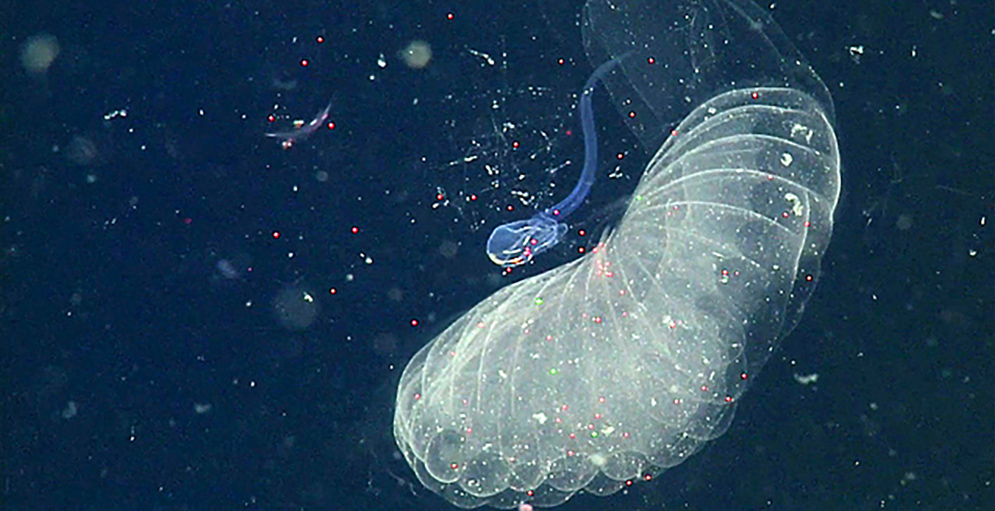
Just like us, larvaceans are chordates. These small tadpole-like animals live at midwater depths of the world’s oceans. All species construct complicated, mucus structures, called ‘houses’ where the animal lives. To feed, the larvacean beats its tail, pumping seawater through its house. The sticky filter structure has two parts: the outer filter traps coarse particles; the inner traps fine ones. When the house becomes clogged, the animal discards it and it sinks to the bottom. In Monterey Bay, there are giant larvaceans that create large houses that can exceed one meter (three feet!) in its greatest dimension.
Pump it Up
It’s amazing how much the larvacean can tell us about the oceans carbon cycle. Researchers at the Monterey Bay Aquarium Research Institute (MBARI) wanted to know how much carbon the giant larvacean ‘house’ can transport in Monterey Bay. Dr. Kakani Katije (you’ll also see profiled in our Featured Scientist) helped design a tool for seeing the volume larvaceans pump – and ultimately, their filtration rates.
Their research shows that the depths at which the giant larvaceans live (about 300-900 feet / 100 to 300 meters), they will completely graze this part of the water column in Monterey Bay within 500 days. That’s at average density – at some times of year the density of giant larvaceans is much higher. At both the maximum density and maximum filtration rates, the larvaceans can filter the same volume of water in as little as 13 days! These animals can filter seawater faster than any other drifting open-ocean animal measured.
Pooping Plastics
Larvacean food becomes fecal pellets (along with their discarded houses) and are full of large particles, both organic and non-organic matter. Their poop rapidly sinks to the bottom of the ocean. Scientists estimate that the giant larvaceans contribute up to one-third of the carbon transported to the deep seafloor of the Monterey Bay.
But, carbon isn’t the only thing the larvacean houses trap. An August 2017 paper by MBARI scientists, including Dr. Katije, shows that the larvaceans trap micro-beads of all sizes in their houses. Including plastics.
What We Learn from Larvaceans
We are responsible for 8 billion tons of plastic thrown into the ocean every year. It’s going to take a whole lot of other chordates—US!—to chip-in. (STOP WITH THE PLASTIC WATER BOTTLES!).
One thing is for sure, there’s a lot more for us to learn in how the ocean informs advancements in technology.















